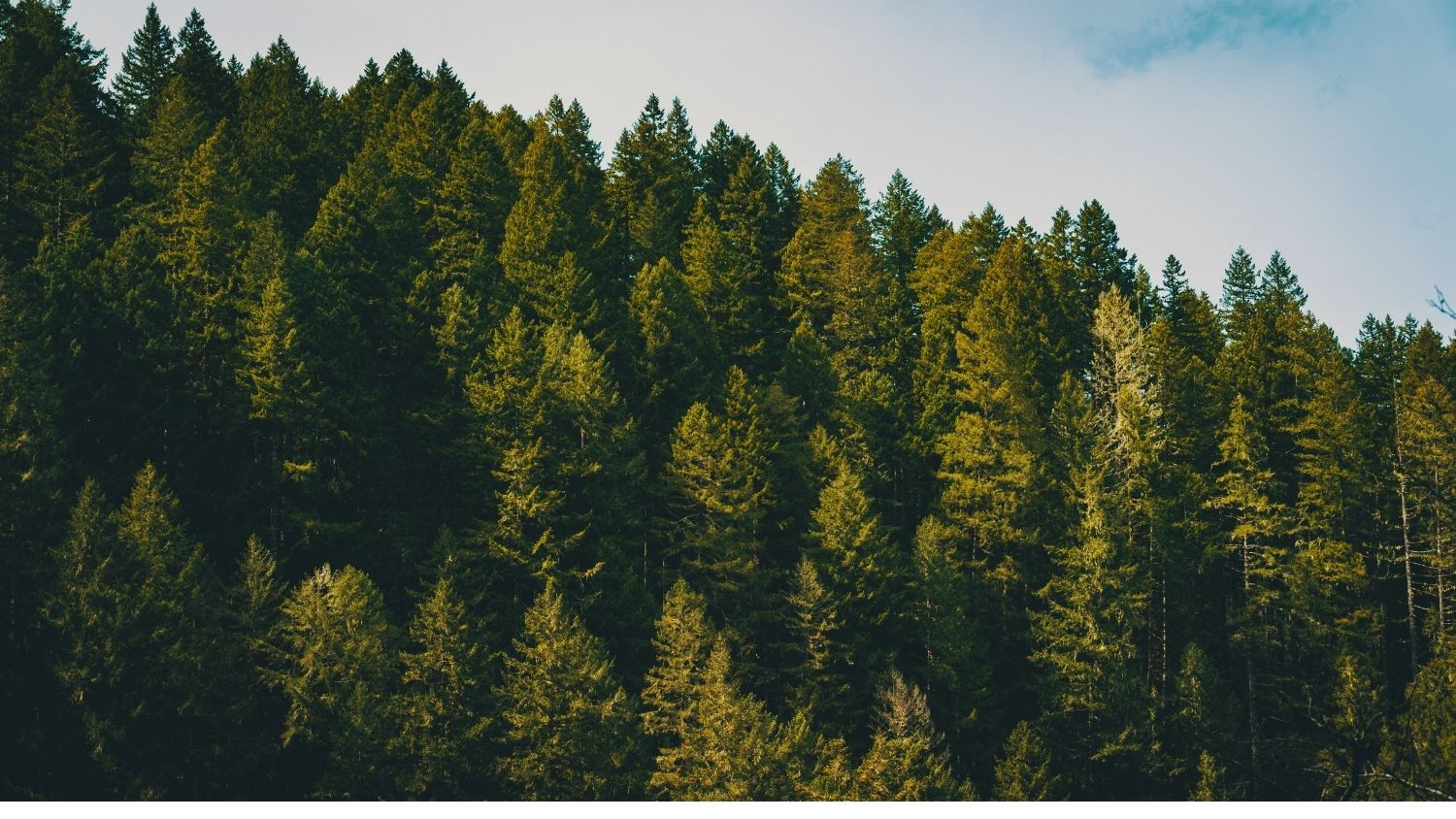Climate Change May Cut U.S. Forest Inventory by a Fifth This Century
A study led by a North Carolina State University researcher found that under more severe climate warming scenarios, the inventory of trees used for timber in the continental United States could decline by as much as 23% by 2100.

Mountain forests. Photo by Alek Kalinowski on Unsplash
A study led by a North Carolina State University researcher found that under more severe climate warming scenarios, the inventory of trees used for timber in the continental United States could decline by as much as 23% by 2100. The largest inventory losses would occur in two of the leading timber regions in the U.S., which are both in the South.
Researchers say their findings show modest impacts on forest product prices through the end of the century, but suggest bigger impacts in terms of storing carbon in U.S. forests. Two-thirds of U.S. forests are classified as timberlands.
“We already see some inventory decline at baseline in our analysis, but relative to that, you could lose, additionally, as much as 23% of the U.S. forest inventory,” said the study’s lead author Justin Baker, associate professor of forestry and environmental resources at North Carolina State University. “That’s a pretty dramatic change in standing forests.”
In the study, which is published in Forest Policy and Economics, researchers used computer modeling to project how 94 individual tree species in the continental United States will grow under six climate warming scenarios through 2100. They also considered the impact of two different economic scenarios on demand growth for forestry products. The researchers compared their outcomes for forest inventory, harvest, prices and carbon sequestration to scenarios with no climate change. Researchers said their methods could provide a more nuanced picture of the future forest sector under high-impact climate change scenarios compared to other models.
“Many past studies show a pretty optimistic picture for forests under climate change because they see a big boost in forest growth from additional carbon dioxide in the atmosphere,” Baker said. “The effect that carbon dioxide has on photosynthesis in some of those models tends to outweigh the losses you see from precipitation and temperature induced changes in forest productivity and tree mortality. We have a model that is specific to individual tree species, and that allows us to better understand how climate factors influence growth rates and mortality.”
Researchers found that in certain regions trees would grow more slowly in higher temperatures, and die faster. Combined with increasing harvest levels and greater development pressures, that led to declines in the total tree inventory. They projected the largest losses would be in the Southeast and South-Central regions, which are two of the three most productive timber supply regions in the U.S. Those regions could see tree inventories shrink by as much as 40% by 2095 compared to one of their baseline scenarios. Due to declines in pine products, the researchers projected softwood lumber prices could increase as much as 32% by 2050.
“We found pretty high levels of sensitivity to warming and precipitation changes for productive pine species in the South, especially when climate change is combined with high forest product demand growth,” Baker said.
However, the researchers projected gains in tree supplies in the Rocky Mountain and Pacific Southwest regions, driven by higher rates of death of certain trees that lead to larger harvests initially, followed by the growth of more heat-tolerant species.
“These are regions losing a lot of inventory right now due to pests and fire disturbance,” Baker said. “What you’re seeing is a higher level of replacement with climate adaptive species like juniper, which are more tolerant to future growing conditions.”
Combining the effects from all the regions, researchers projected total losses of U.S. tree inventory of 3 to 23% compared to baseline. They projected losses in carbon sequestration in most scenarios, and estimated the value of lost carbon stored in U.S. forests up to $5.5 billion per year.
They found the economic impact of climate change on the overall U.S. forest products industry value could range from a loss of as much as $2.6 billion per year – representing 2.5% of the value of the industry – or a gain in value of more than $200 million per year.
“We saw that the markets could be more resilient than the forests themselves,” Baker said. “Your market effects may seem modest in terms of the effect it has on the consumers and producers, but those impacts are small compared to the carbon sequestration value that forests provide on an annual basis.”
Researchers say more studies are needed to bring the future of U.S. forestry into sharper focus.
“We don’t know a lot about how disturbance-related mortality or loss in tree productivity is going to bear out across the landscape as temperatures get warmer,” Baker said. “We did our best to address a couple pieces of the puzzle with temperature and precipitation changes, and interactions between climate and market demand, but a lot more work needs to be done to get a good handle on climate change and forestry.”
Publication: Justin S.Baker, et al., Projecting U.S. forest management, market, and carbon sequestration responses to a high-impact climate scenario, Science and Society (2023). DOI: 10.1016/j.forpol.2022.102898.
Original Story Source: North Carolina State University

 Alerts Sign-up
Alerts Sign-up